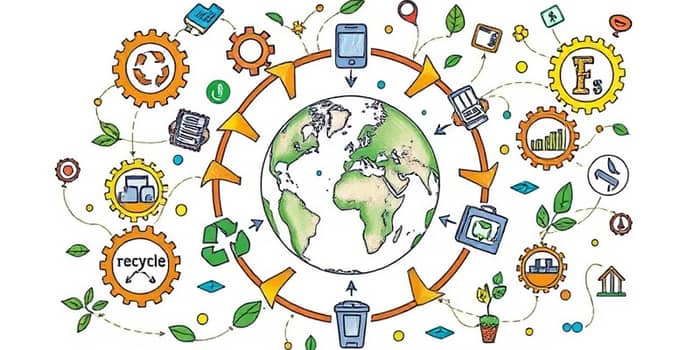
The world is at a crossroads. Traditional linear models—take, make, dispose—are under pressure from resource scarcity, climate change, and shifting consumer values. Across industries, executives are reimagining operations to deliver profitability and sustainability. This movement is more than a trend; it is a fundamental shift toward an economic system that mirrors nature’s own cycles.
By embracing circularity, organizations are discovering new revenue streams, building resilience, and meeting stakeholder demands for environmental stewardship. In this article, we explore how the circular economy is shaping next-generation business models, the drivers behind its explosive growth, and practical strategies to join the movement.
At its heart, the circular economy challenges the notion of waste. It aims to eliminate waste and maximize value by keeping products and materials in use for as long as possible. Core principles guide this transformative approach:
These principles require a comprehensive shift in design, sourcing, production, and end-of-life management. Companies that succeed weave circularity into their strategic vision, ensuring every decision aligns with a regenerative mindset.
The momentum behind the circular economy is backed by compelling economic forecasts. Between 2025 and 2034, the global circular market is projected to grow at a 23.4% compound annual growth rate. By 2040, adopting circular business solutions could unlock more than $4.5 trillion in value across sectors.
In practice, circular models deliver tangible benefits. Companies often report 15-20% topline growth alongside 10–15% savings on material costs. These gains extend beyond the balance sheet, reducing supply chain and regulatory risks while enhancing brand reputation.
Forward-thinking companies are pioneering diverse circular models that reshape traditional offerings. The table below highlights four prominent approaches:
Each model captures value at multiple stages of the product life cycle. By shifting from ownership to access, businesses forge lasting relationships with customers and minimize environmental impact.
What fuels the rapid adoption of circular principles? A confluence of factors makes this movement irresistible:
Together, these drivers create a powerful business case. Companies that ignore circular trends risk falling behind competitors who leverage sustainability as a differentiator.
Technology is the backbone of scalable circular solutions. Leading innovations include:
These technologies not only improve operational efficiency but also foster data-driven circular value chains that span industries and geographies. Early adopters gain significant competitive advantage and position themselves as leaders in sustainability.
Despite the clear benefits, implementing circular models can be complex. Barriers include high upfront costs for infrastructure, intricate regulatory landscapes, and consumer awareness gaps. Yet, companies that tackle these challenges strategically can thrive.
Best practices for success:
By following these steps, businesses can transform potential roadblocks into launchpads for innovation.
The transition to a circular economy is not a sideline initiative—it is the future of competitive, responsible business. Organizations that embrace circular principles will unlock new markets, enhance resilience, and contribute to a healthier planet.
As we look ahead, one thing is certain: the circular revolution is gathering pace. Now is the time to reimagine products, processes, and partnerships. By designing out waste, regenerating resources, and harnessing cutting-edge technologies, companies will fuel the next generation of business models—and redefine success in the 21st century.
References













